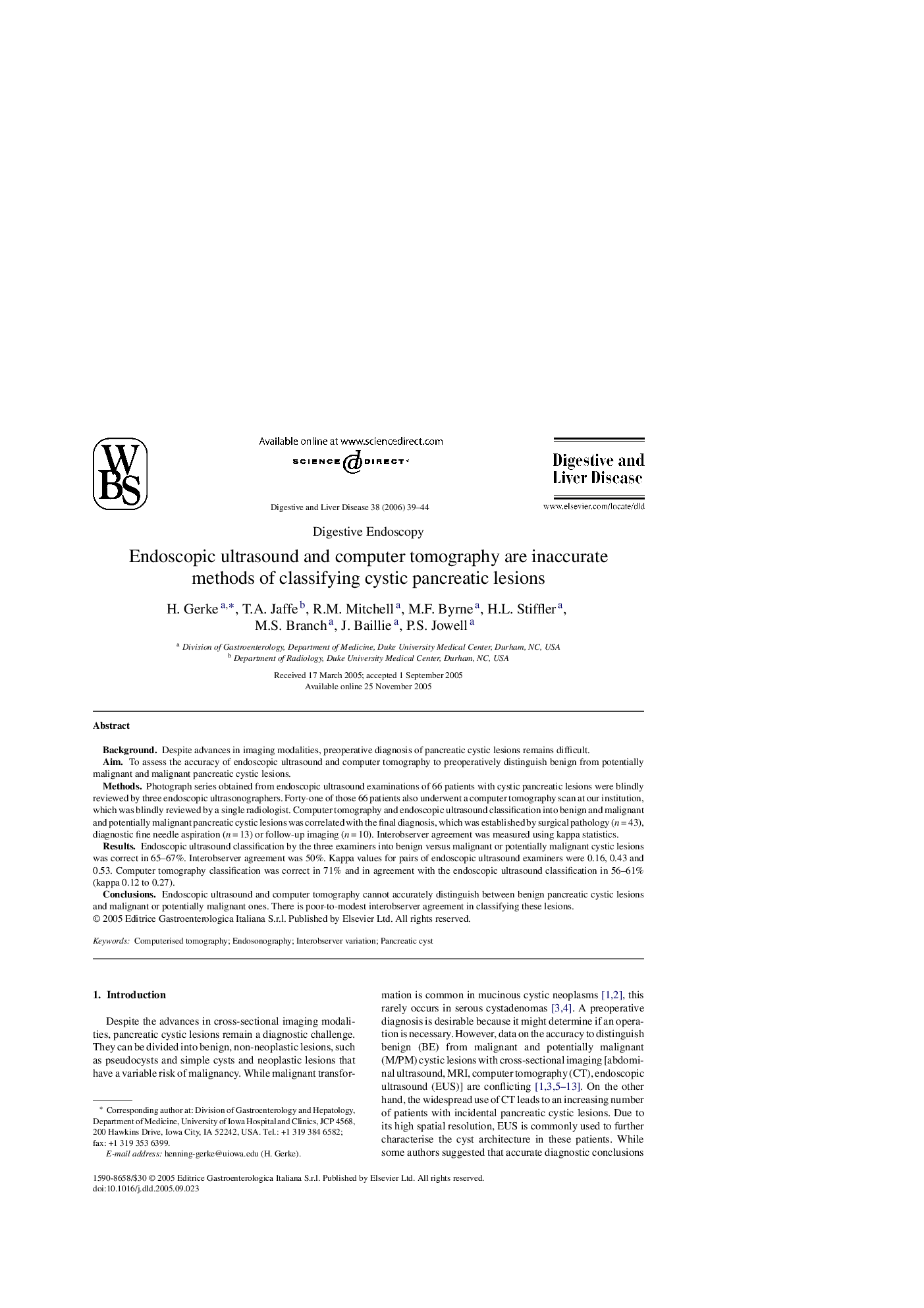| Article ID | Journal | Published Year | Pages | File Type |
|---|---|---|---|---|
| 3266776 | Digestive and Liver Disease | 2006 | 6 Pages |
BackgroundDespite advances in imaging modalities, preoperative diagnosis of pancreatic cystic lesions remains difficult.AimTo assess the accuracy of endoscopic ultrasound and computer tomography to preoperatively distinguish benign from potentially malignant and malignant pancreatic cystic lesions.MethodsPhotograph series obtained from endoscopic ultrasound examinations of 66 patients with cystic pancreatic lesions were blindly reviewed by three endoscopic ultrasonographers. Forty-one of those 66 patients also underwent a computer tomography scan at our institution, which was blindly reviewed by a single radiologist. Computer tomography and endoscopic ultrasound classification into benign and malignant and potentially malignant pancreatic cystic lesions was correlated with the final diagnosis, which was established by surgical pathology (n = 43), diagnostic fine needle aspiration (n = 13) or follow-up imaging (n = 10). Interobserver agreement was measured using kappa statistics.ResultsEndoscopic ultrasound classification by the three examiners into benign versus malignant or potentially malignant cystic lesions was correct in 65–67%. Interobserver agreement was 50%. Kappa values for pairs of endoscopic ultrasound examiners were 0.16, 0.43 and 0.53. Computer tomography classification was correct in 71% and in agreement with the endoscopic ultrasound classification in 56–61% (kappa 0.12 to 0.27).ConclusionsEndoscopic ultrasound and computer tomography cannot accurately distinguish between benign pancreatic cystic lesions and malignant or potentially malignant ones. There is poor-to-modest interobserver agreement in classifying these lesions.
